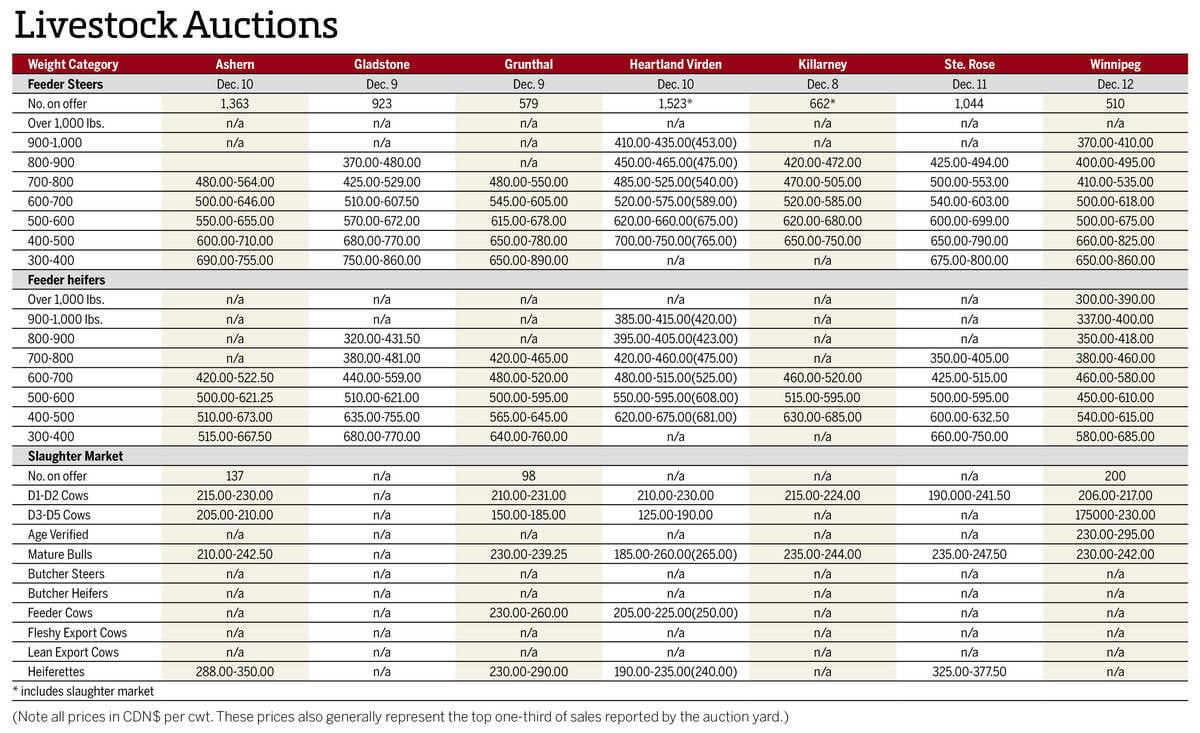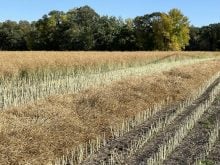Tariffs remained the talk of the grain and oilseed futures during the last full trading week of March, although the ongoing lack of clear direction from the United States on the tariff front meant that most of the conversations were highly speculative.
New threats of across-the-board U.S. tariffs on automobile imports took some attention away from the broader trade actions tentatively set to come into effect on April 2. The U.S. is a major importer of Canadian canola oil, and there are concerns that business could be curtailed. However, any concern was hard to make out in the futures market, with canola trending higher and sitting about $40 off its lows by March 28.
Read Also

Manitoba cattle prices Dec. 16
Here’s what local farmers were getting paid last week for their cattle at Manitoba livestock auction marts; prices covering the week Dec. 8-12, 2025.
China imposed its own tariffs on Canadian canola oil and meal earlier in March, which sparked a bearish reaction in the futures despite the fact canola seed wasn’t targeted. While confirmation in the export data won’t be available for some time, it’s generally expected that China was busy buying up cheap Canadian canola seed at the lows for its own domestic processing industry.
Agriculture and Agri-Food Canada released updated supply/demand estimates on March 21, doubling their call on 2025/26 canola ending stocks to 2.0 million tonnes — which would also be up by 700,000 tonnes from the anticipated carryout for the current marketing year.
While anticipated canola exports were revised slightly higher from the February forecast, they would still be down by 1.500 million tonnes on the year at 6.000 million. Meanwhile, projected domestic canola usage for 2025/26 was forecast at 11.400 million tonnes — down by a million tonnes from the February forecast.
AAFC said its forecasts were based off the current trade policies and could easily be altered in subsequent reports.
“The reduced (domestic usage) forecast is tentative and may decline further if proposed tariffs and trade disturbances materialize,” said AAFC adding “the crush forecast may revert to last month’s estimates if policies stabilize, and plants operate at full capacity.”
In the U.S. grain and oilseed markets, the U.S. Department of Agriculture’s prospective plantings report, out March 31, is expected to confirm a sharp increase in corn plantings in 2025 at the expense of soybeans. While tariff talk should continue to take top billing in the list of market moving influences, any surprises in that data could spark sharp moves one way or the other.















